5 Design Ideas to Improve Your ESG or Sustainability Report
With more information to disclose, your ESG or Sustainability report is likely growing. But if it isn’t visually strategic, your readers may get overwhelmed or lost. These visual design best practices can improve your report’s usefulness and ease access to the information you most want audiences to find.
Once you have Identified the right approach and content for your company’s ESG Report, consider the way you present the information. Don’t risk losing your readers by confusing them or by making it hard for them to find what they need—make sure your report is optimized for efficient, effective communication. Below are five key things you need to incorporate.
(Note: While clients may create web-based reports, interactive PDF reports are the dominant format. So, while the five principles here are universal to all reports, we highlight details and examples from interactive PDFs).
1. Clear Navigation
Global interactive navigation and cross links are a basic requirement for an interactive PDF. Link your table of contents, references, details and data throughout your report as well as externally to your website or other sources for more information. A robust global navigation running throughout the report allows readers direct access to their interests, no matter where they are.
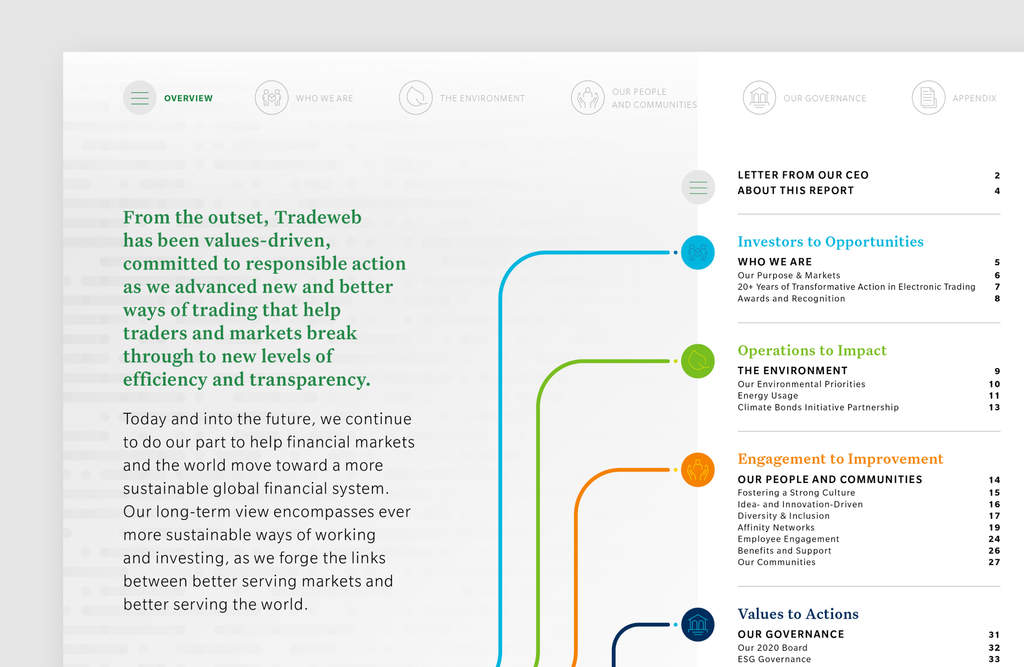
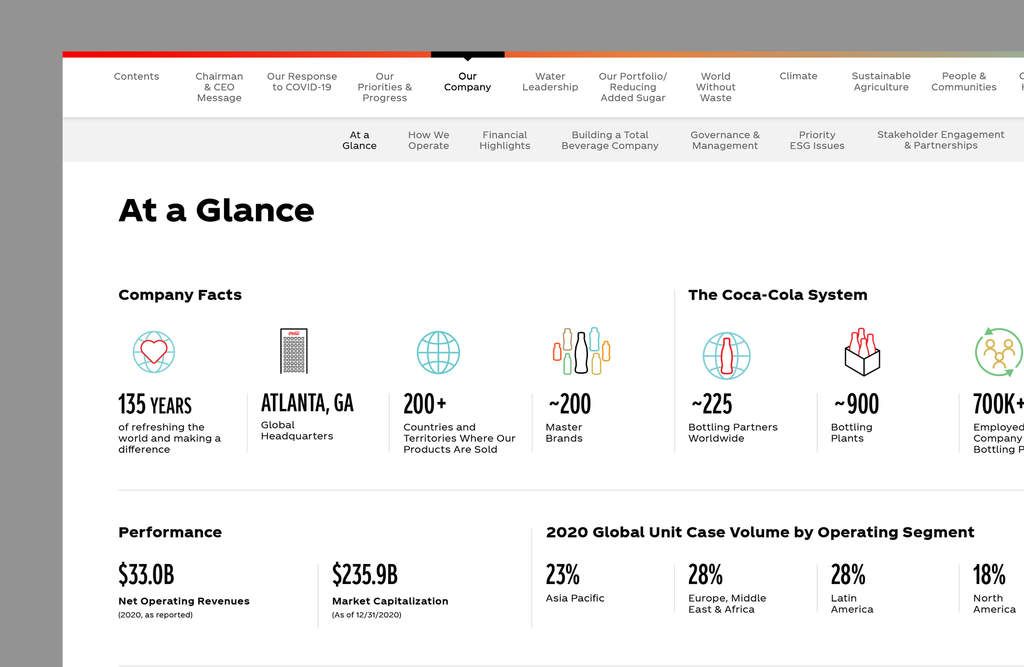
2. Ruthless Editing
Being a ruthless editor may not seem like a visual design tip, but shorter content can communicate more effectively (let’s face it—no one wants to read pages of running text).
Shorter content can reinforce the hierarchy of information, helping to emphasize key items and keeping important information from being lost. And, it can more easily be married to visuals—the infographics that illustrate complex information and photos that bring the content to life.
Streamlining tips:
- Consider the use of a suite of audience-focused reports, so for example, Diversity, Equity & Inclusion can contain all the detail it deserves without being lost in a sea of information.
- Move evergreen information to your website and link to it.
- Use statistics, facts, callouts, and infographics to break up text and make the content skimmable.
3. Visual Room to Breathe
With concern over page count (especially as the amount of reported information increases), it is tempting to pack pages “wall to wall.” This diminishes the accessibility of the information and makes for a “one note” presentation. If less is not possible (see previous tip), allow room for the content to breathe. Even if some pages are full, smart use of open space can balance that density, add drama and help to elevate the importance of key information. For example, create visually spacious opener pages for chapters of the report. These help the eye and mind to understand what the key topics are and, therefore, aid in absorbing denser information that might follow.
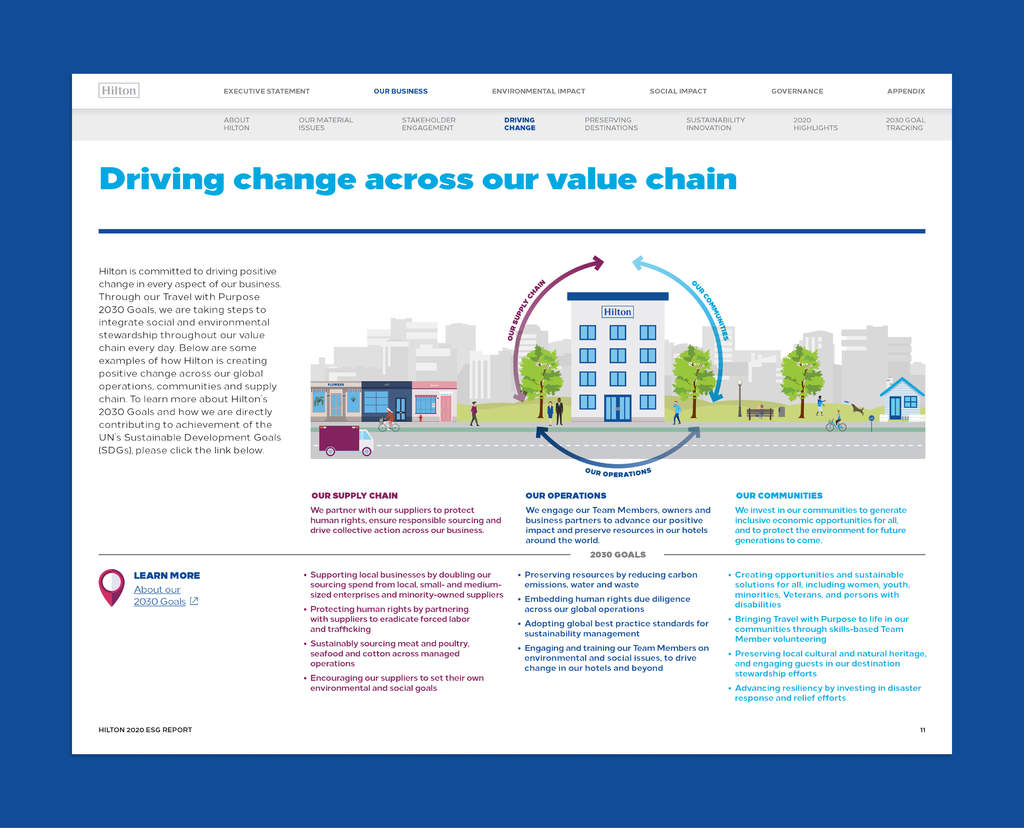
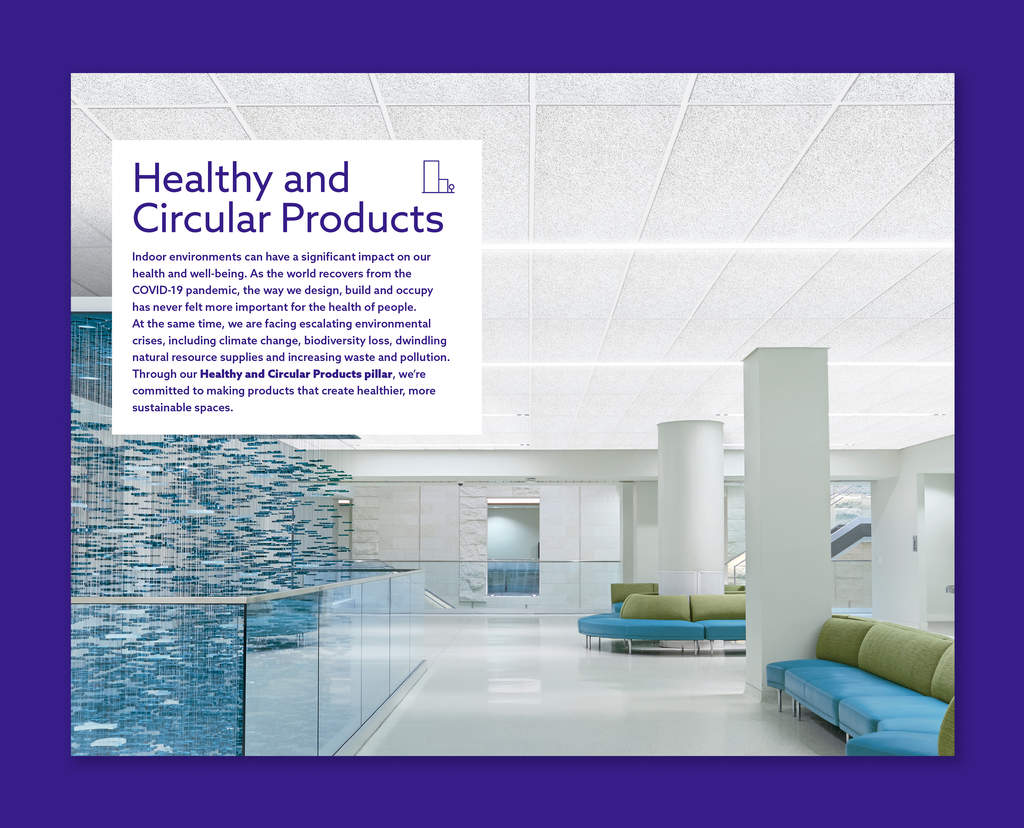
4. Good Image Quality
The quality of the images you use says much about your operation. Using fewer high-quality images is better than a “kitchen sink” approach. And if none are available, you can create a handsome report without any photography. Illustrations, icons, typography, color, infographics, and charts can all add the visual relief dense documents need—as well as reinforce your brand. Take care to stay away from tired visual cliches—a “seedling in hands” photo won’t add value to your report.
5. Aggregated Data, Goals and Progress
Make it easier for those interested in the data and details to find what they are looking for—create a scorecard or progress against goals feature. Keep the goals and commitments together, so they can be scanned in one place. And remember, some of your readers are robots. If you have a lot to disclose, a web-based data hub or a data appendix is a great idea.
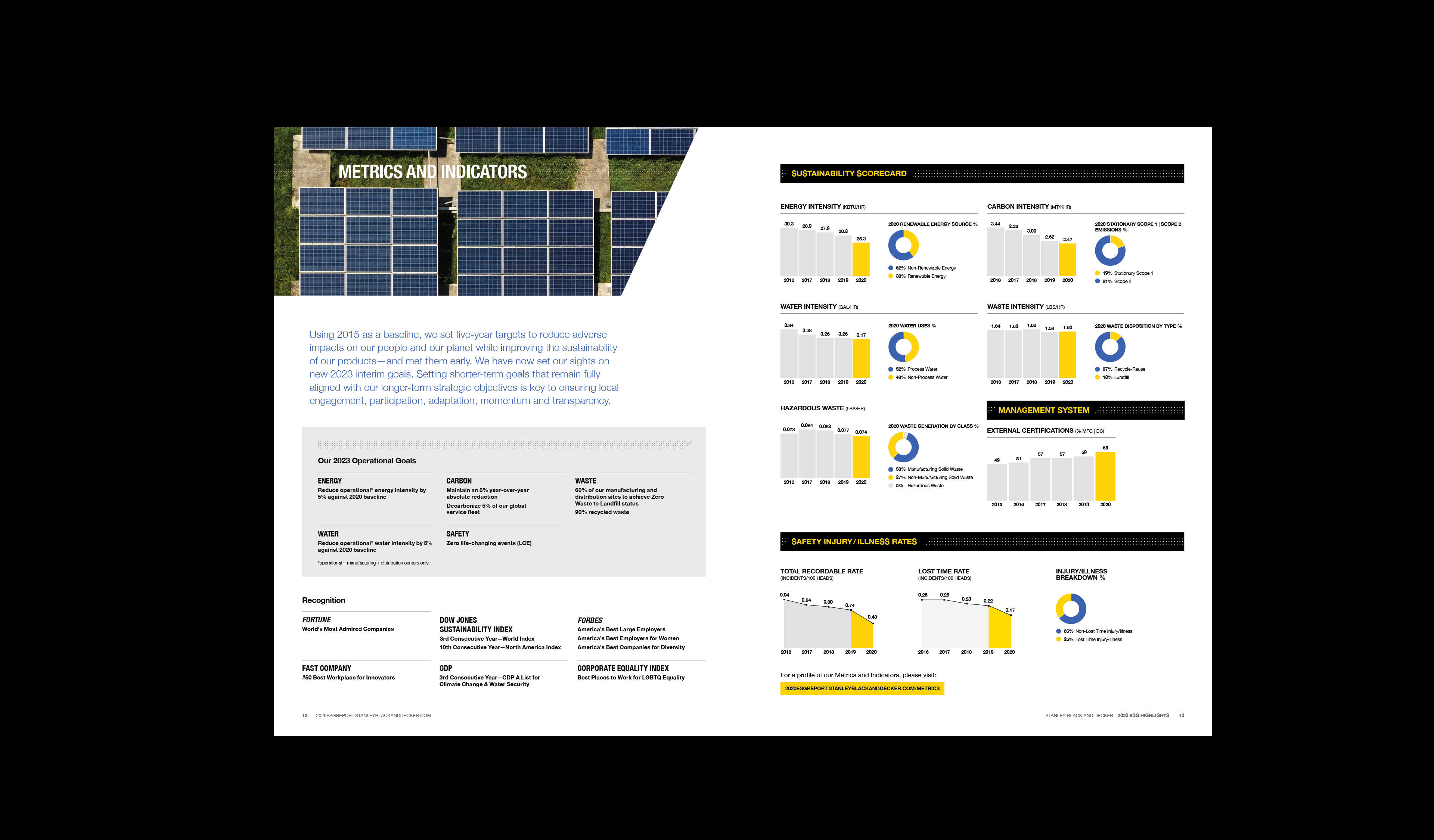
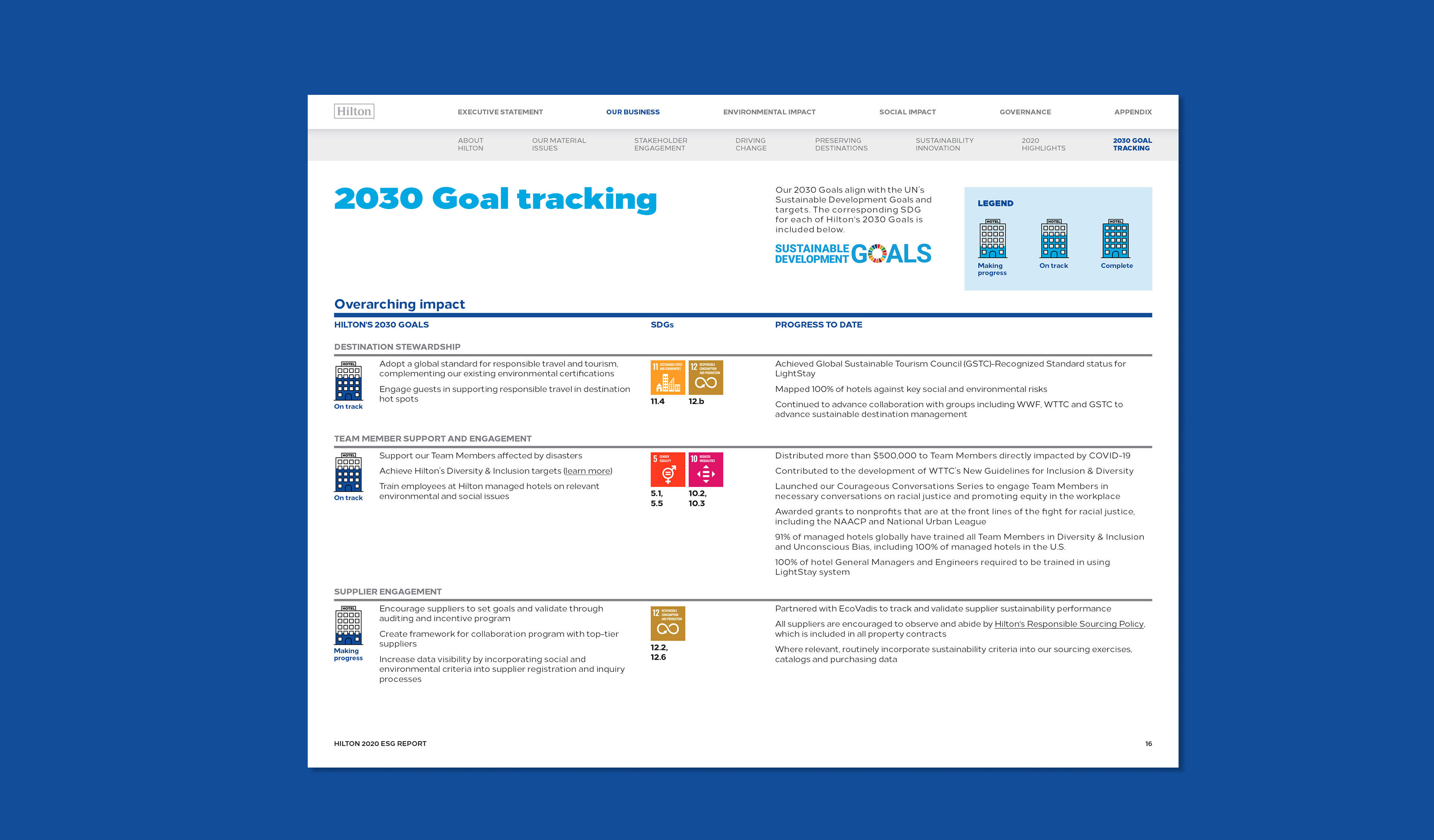
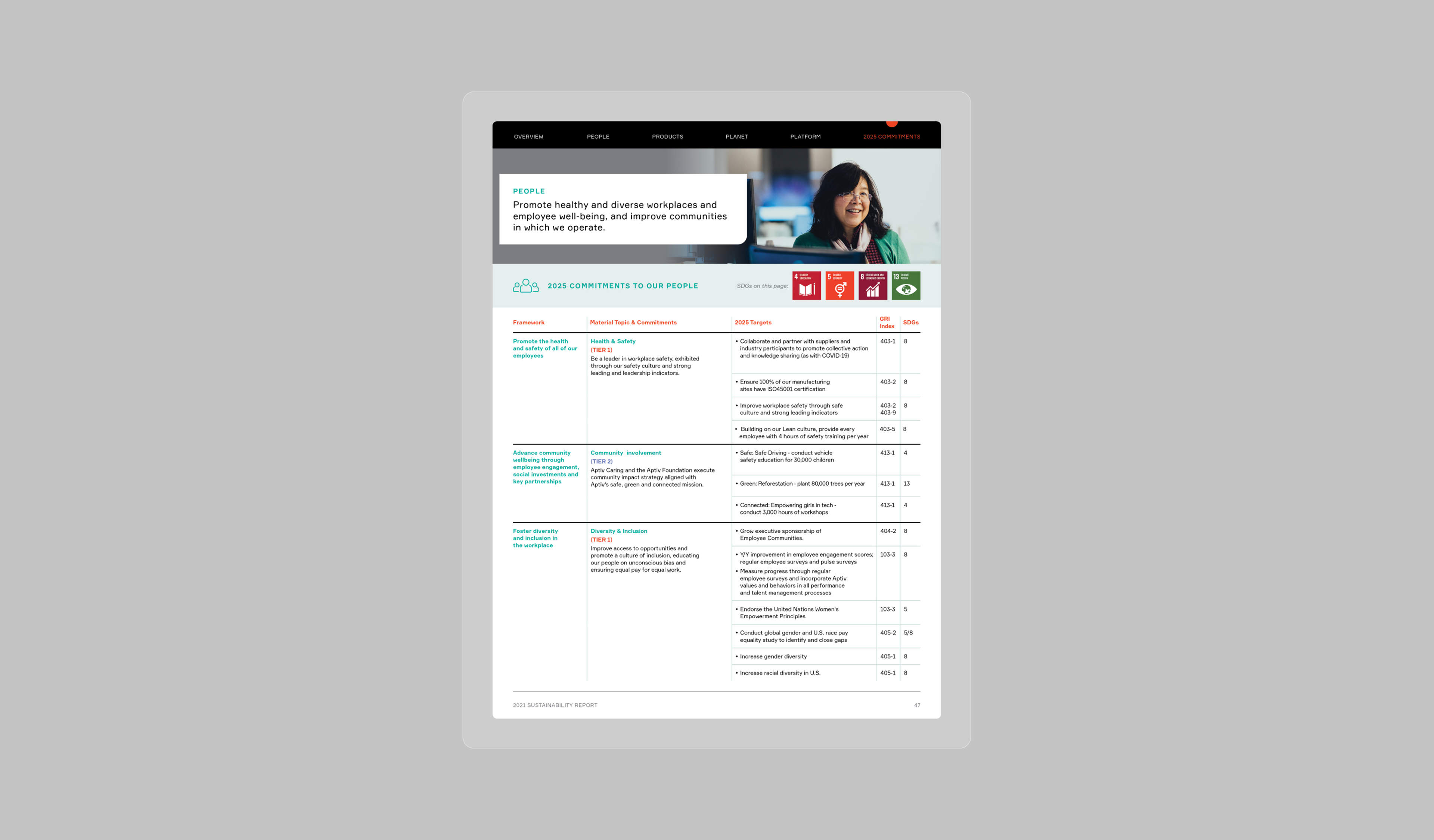
The Takeaway
A Sustainability or ESG report (or report suite) is an opportunity to tell your ESG story. Don’t run the risk of diminishing your messages with a report design that doesn’t effectively communicate—and help to amplify—this important story. Creating a high-quality ESG report builds trust with employees, shareholders and all stakeholders. It demonstrates that your company understands how ESG issues affect your ability to create long-term value, how you are investing in your employees, and how you are building your culture and living your purpose.
How Ideas On Purpose Can Help
For over 20 years IOP has been helping companies of all sizes with purpose-driven communications, including corporate reporting and ESG storytelling. Our strategy, content, digital and creative teams are ready to help you define and tell your ESG/Sustainability story and meet your reporting goals. Feel free to email us, we’re happy to discuss the possibilities.
Featured in this article are examples from Tradeweb, Hilton, Coca-Cola, Aptiv, Stanley Black & Decker and Armstrong World Industries, all Ideas On Purpose reporting clients.
Photo by Edgar Castrejon on Unsplash